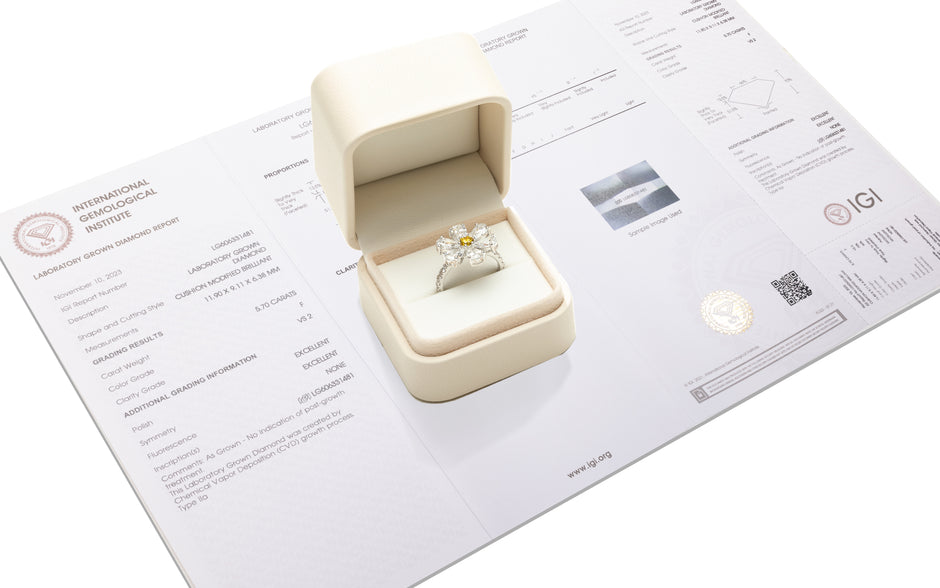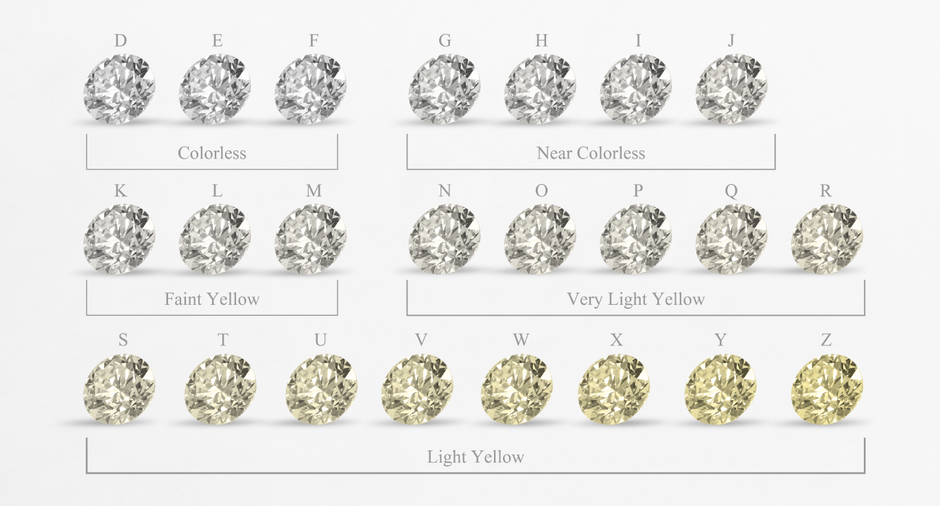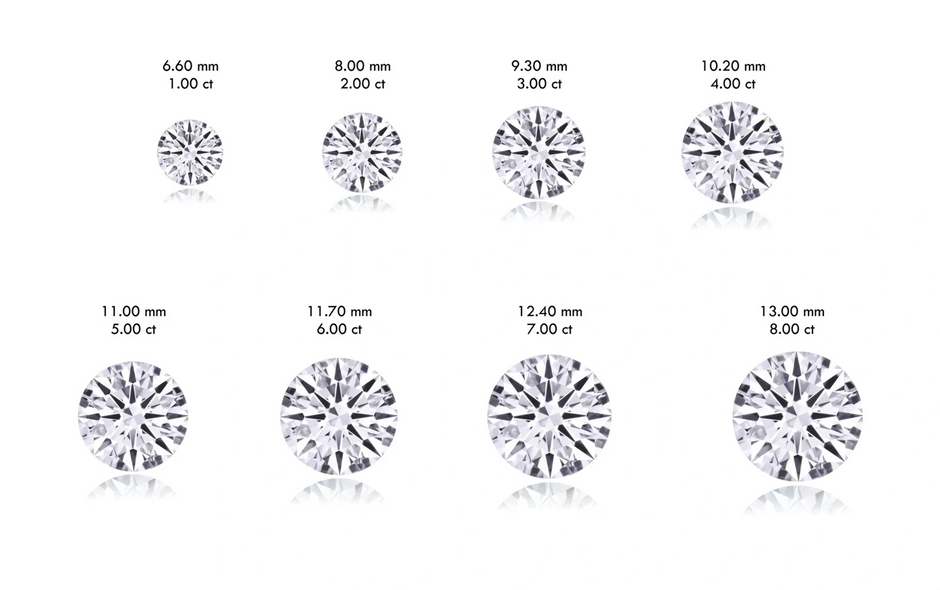
The Reference Gemmology Laboratories
To guarantee the exceptional authenticity and quality of our synthetic diamonds, we only trust two gemmological laboratories recognized worldwide for their rigor and their indisputable reputation.
- The International Gemmological Institute (IGI)
- The Gemological Institute of America (GIA)
All our synthetic diamonds over 0.5 carat are accompanied by a certificate issued by one of these two laboratories, ensuring you a precise and independent analysis according to the strictest standards in the industry.
Upon request, smaller certified diamonds are also available. Each stone, regardless of size, is carefully inspected to offer you only the most exceptional gems.
Our experts scrupulously compare the information in the certificates with the characteristics of the stones, thus ensuring impeccable quality and total compliance.

The color
The color of a diamond is graded on an international scale ranging from D (the rarest and most valuable) to Z (visible yellowish or brownish tint). The more colorless a diamond is, the purer and brighter it is.
At Arvils, we offer exclusively the purest diamonds, graded DEF, for jewelry that captivates with its brilliance and perfection.
Some nuances are so subtle that they escape the untrained eye. However, these slight variations have a considerable impact on the quality and price of the diamond.
Clarity
Every diamond has unique imperfections, either internally (inclusions) or externally (blemishes). These characteristics are graded on a standardized scale, ranging from Flawless (FL), with no inclusions, to Included (I), with features visible to the naked eye.
At Arvils we only select diamonds with exceptional clarity, from FL to VS2, to guarantee sparkling jewelry of impeccable quality.


Carat Weight
The carat is the unit of measurement of the weight of a diamond:
- 1 carat = 0.2 grams
Diamonds can be measured with an accuracy of up to 0.005 carats (one thousandth of a gram). Weight influences not only the visible size of the diamond but also its rarity and value. Explanation: Two diamonds of the same weight can have different values depending on other criteria (color, clarity, cut). It is therefore important to consider carat in conjunction with the other Cs.
To obtain an accurate measurement, it is essential to weigh the diamond in an enclosed area, free from air movement.

The Gemmological Certificate
The importance of a certificate
The certificate is issued by recognized laboratories, such as the GIA (Gemological Institute of America), IGI (International Gemological Institute) or HRD. These laboratories are neutral and are not involved in the sale. It guarantees:
- Quality: Objective evaluations of the main characteristics (the 4Cs: Carat, Cut, Color, Clarity).
- Traceability: Unique certification number for each diamond
- Diamond Value: A certificate is essential to ensure the value of the diamond, whether for insurance, resale or financial evaluation.
- A certificate is your diamond's "identity card", a guarantee of confidence that protects your investment.
Additional Criteria
Some description
Symmetry
A diamond’s symmetry refers to how precisely its various facets align and intersect. High symmetry is crucial to maximizing the diamond’s brilliance, fire, and overall visual appeal. It also influences how the diamond interacts with light. A diamond with good symmetry allows light to pass through the diamond as it should. Light bounces off the facets and angles and back through the diamond’s table to your eye.
If you are looking for a diamond that offers the most brilliance and fire, it is advisable to look for an " Excellent " symmetry grade on the report.
The calibration scale includes 5 grades ranging from Excellent to Poor.
Polishing
Diamond polish refers to the quality of the finish of the diamond surface after it has been cut and faceted. The quality of the polish plays a crucial role in determining the overall appearance and value of a diamond. Polish grades are based on the smoothness of each facet as assessed by a gemologist under magnification. The grading scale ranges from Excellent to Poor.
Fluorescence
Strong or very strong fluorescence lowers the value of diamonds with colors ranging from D to H because it can make the diamond appear slightly milky. Buyers looking for high-quality diamonds will prefer those without fluorescence.
What are the 4Cs and why are they important?
The 4Cs are the main criteria used to evaluate the quality of a diamond, whether natural or synthetic. They help define its value and appearance. Each "C" represents a specific aspect of the diamond: (the 4Cs: Carat, Cut, Color, Clarity). If you are looking for a diamond, understanding the 4Cs helps you make an informed choice and fully appreciate the value of this precious stone.
What is the difference between IGI and GIA labs?
The IGI (International Gemological Institute) and GIA (Gemological Institute of America) laboratories are two of the largest gemological laboratories in the world, specializing in the analysis and certification of precious stones, especially diamonds.
IGI is best known for diamonds destined for the jewelry market, particularly in Asia and Europe. GIA is very influential in the North American market.






